Floating Islands
Floating islands are exactly what they sound like: large landmasses suspended in mid air. They are the product of large deposits of kaalite-dense rock being pushed into the sky as a consequence of the forces of Law of Celestial Attraction and the Law of Celestial Repulsion.
General Information
Altitude
The altitude of a floating island depends on its kaalite concentration, how it was formed, the density of its soil, and its location. Most islands hover somewhere between 1000 and 2000 meters off the ground. Islands that were shaken free from places that were already a higher altitude usually remain as high.
The altitude of floating islands shifts with the cycle of the day, as their Aura source rises and falls. An island with a solar Luminosity will gradually rise during the day and gradually sink at night. On very large islands, this movement is negligible. The smaller the island, the more it moves.
Geography
Floating islands have similar geography to whatever their surroundings were like before they were created. Over time, wind, rain, and Celestial forces erode away at the island until it becomes generally flat with sloping sides at its edges. The age of an island can be estimated by how eroded its surface is. Younger islands tend to have much sharper and more dramatic formations.
Floating islands are not generally big enough to have permanent rivers. Instead, they might have small temporary creeks that revive with rainfall. If the island is in an especially moist portion of atmosphere, these trickles of water can persist for longer. Lakes or large swamps don't exist on floating, but small ponds are sometimes possible.
Flora and Fauna
The plants and animals native to floating islands are sometimes completely unique to the island and cannot be found anywhere else. Most animals native to floating islands are small. Birds, reptiles, and insects are the usual occupants; mammals are rarer. Glowflora and fauna are especially common on floating islands. All of the permanent organisms on floating islands are suited to limited water, and so share many adaptations with species found in arid regions.
Plants help the island resist erosion. Some islands even have enough glowflora on their surfaces to help keep them afloat. The longest lasting islands are covered in thriving vegetation.
Other creatures use islands as temporary residences. They are popular roosting spots for migratory birds and floatbeasts. They are also relatively safe spawning, hatching, or birthing grounds for anything that can get to them.
Sapient Habitation
Large, low altitude floating islands are sometimes inhabited by people. People manage gain access to floating islands by bridging or building up to them, riding on the backs of flying Glowbeasts, or on ferries.
A ferry is a chunk of floatstone that floats near a larger island. It is small enough that when its Aura source disappears for the day, it will sink quickly to the ground, where passengers can reach it and climb aboard. When its source of Luminosity appears again, it rises up to the larger island, taking its cargo with it.
Natural-forming ferries are the easiest way to gain access to floating islands. People take advantage of these ferries and often build small shelters on them to stay in while waiting for it to take them to the islands. If an island doesn't have a very good ferry, it is possible to make one.
People must be careful to monitor the amount of weight they add to a natural ferry. Adding too much weight can throw off its cycle and prevent it from reaching the main island.
Permanent Settlements
Most islands do not have enough resources for settlements built on them to be completely self sufficient. The main drawback of attempting to live on a floating island is the lack of water. The limited space also creates issues, and the rock is often very dense, so it's nigh impossible to establish any underground infrastructure.
The Hartian Capital is the biggest permanent settlement on a floating island. It survives due to the enormity of the island it stands on, which allows it to carry permanent pools of water and numerous forms of wildlife.
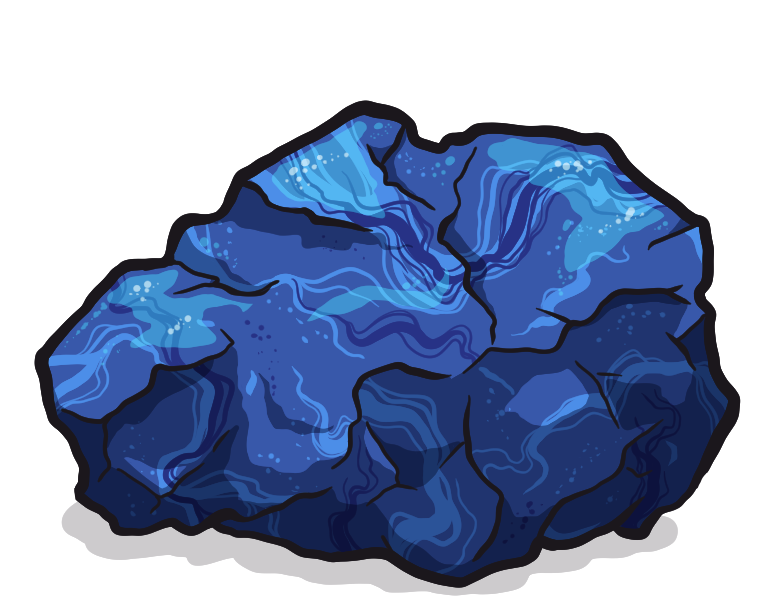
Natural Resources
Floating islands obviously contain very high amounts of kaalite. Smaller floating boulders are often sought after for mining, but islands large enough to support life are best to leave alone. Too much mining on a floating island could disturb the precarious balance that keeps it aloft and lead to disaster. The inhabiting creatures of floating islands can also provide many useful resources.
Despite the obvious risks, some greedy individuals chip away at the islands anyway, endangering themselves, the inhabitants of the islands, and anyone else nearby.
Life Stages
The lifespan of a floating island is usually between 10,000 to 100,000 years, which is quite short on the geological timescale. The planet has a long history of countless islands rising and collapsing over millions of years, altering the geography in ways that normal tectonic movements cannot.
Islands move through four stages of life: Creation, Migration, Erosion, and Collapse. These stages don't have a clear beginning or ending and may overlap each other.
Creation
All floating islands start as a large deposit of kaalite-rich rock created by the process of convergence. Convergence is the process during which bits of kaalite are drawn to more kaalite of matching Luminosity, gradually forming larger and larger kaalite deposits.
These deposits are created and pushed to the surface via Law of Celestial Repulsion. The process takes millions of years. It ends with swaths of floatstone sitting on or near the surface, waiting for something to set it free.
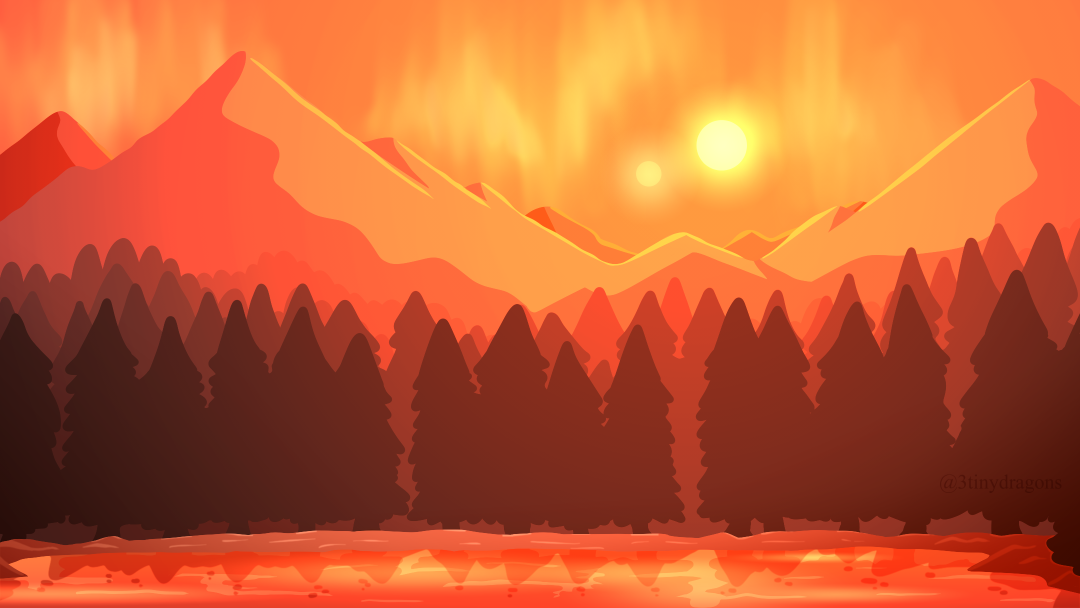
Only areas where the surrounding soil is very loose are floatstone deposits able to start floating without any other assistance. Usually they are drawn into the air in tiny pieces. Rarely are they larger than two or three meters wide.
Skybleed Events
Islands created during Skybleed events are violent and spectacular. When a large deposit of floatstone is exposed to a Skybleed event of its same Luminosity, it can be ripped from the ground, causing terrible earthquakes and is catastrophic damage to the surrounding area.
After the islands are torn free (often fragmenting into several pieces in the chaos), they leave behind deep scars in the ground. These scars sometimes fill with water, creating new lakes. If a lake of similar size to a floating island can be found relatively nearby, it is a good sign that the island was created during a Skybleed event.
Earthquakes
Islands created by earthquakes are formed in a similar way to Skybleed islands, albeit a little less chaotic. These islands also begin as kaalite-saturated areas near the surface. During a strong earthquake, the kaalite boulders may be shaken free from their surrounding rock. Sometimes the earthquake is powerful enough to throw them into the sky, but most often it just releases the floatstone from its bonds, allowing it to slowly but surely make its way into the sky over the course of many years.
The circumstances have to be just right in order for an earthquake to instantly create a floating island. The floatstone's source of Luminosity has to be present, and the earthquake has to be powerful and centered close to the deposit.
Migration
Floating islands are slowly nudged around by winds. Depending on how long the islands last, they can end up many thousands of miles from their point of origin. Islands are also moved by the Aura fields generated by other islands. Islands of the same Luminosity are drawn closer, creating long chains.
These chains often have the largest island hanging in the back, surrounded by the next largest islands, and gradually smaller islands leading in the front. This pattern is created because the lighter, faster moving islands are drawn in closer to the larger islands before being whisked out ahead of them on the wind. The larger islands that move at a similar speed remain close thanks to their Aura fields.
Sometimes islands get close enough that they collide, and if the Aura forces are powerful enough, they may even combine into larger islands. Other times, they disrupt their balance and collapse.
Erosion
Wind and water chip away at floating islands as they make their trek across the skies. In addition, the process of convergence continues. The kaalite in the island is pulled closer and closer to the center, making the center of the island denser and denser. Pieces of rock that lack enough kaalite eventually cleave away. Over time, the island will grow smaller and smaller due to the combined effects of erosion, convergence, and gravity.
Plants help slow the process of erosion by holding the soil together for longer. The oldest islands are covered with plants. In contrast, wildlife can accelerate erosion by consuming plant life or directly destroying the rock.
Collapse
Gradual
Floating islands do not last forever. Most islands are eventually pushed into an area where they can no longer collect enough Aura to keep them afloat. These islands are gradually drained of their energy until they descend to the surface. This process can take as short as one year or as long as several thousand to complete.
Islands can also collapse in pieces, as sections of themselves are broken away due to erosion. These sections descend on their own in the wake of the main island, leaving a long chain of dead islands in its path. These chains of isolated hills are sometimes referred to as "Mound chains". Mounds can sometimes be revived by Skybleed or other spikes in Aura. They are rich sources of kaalite that can easily be mined.
Sudden
The sudden collapse of a floating islands is defined as a complete descent that takes less than a month. Sudden collapse is sometimes caused by intense storms, but usually happens as a result of Skybleed events.
Much like Skybleed events of the island's same Luminosity can tear it from the ground, Skybleed events of the island's opposite Luminosity can drop it from the sky, leaving massive craters in its wake.

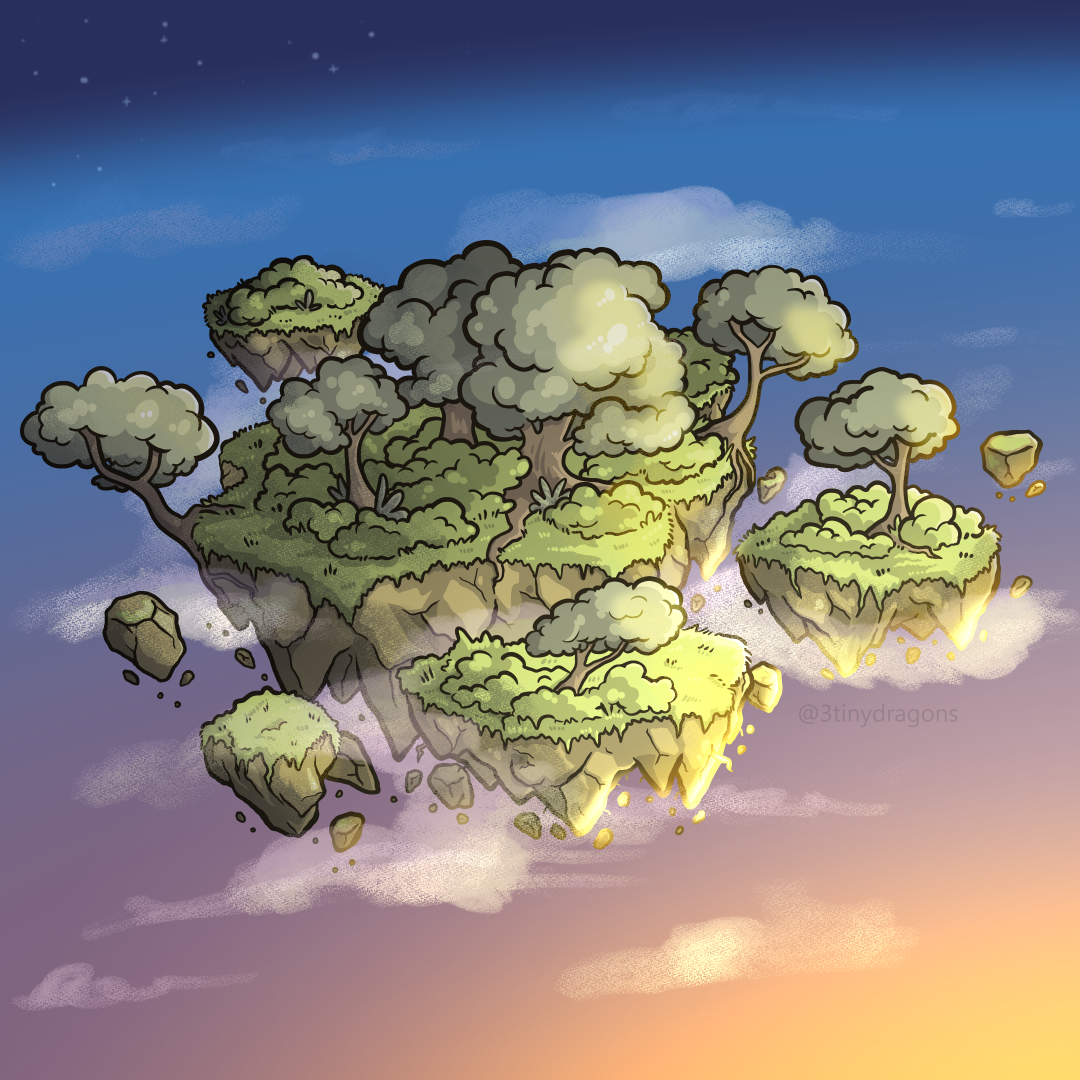
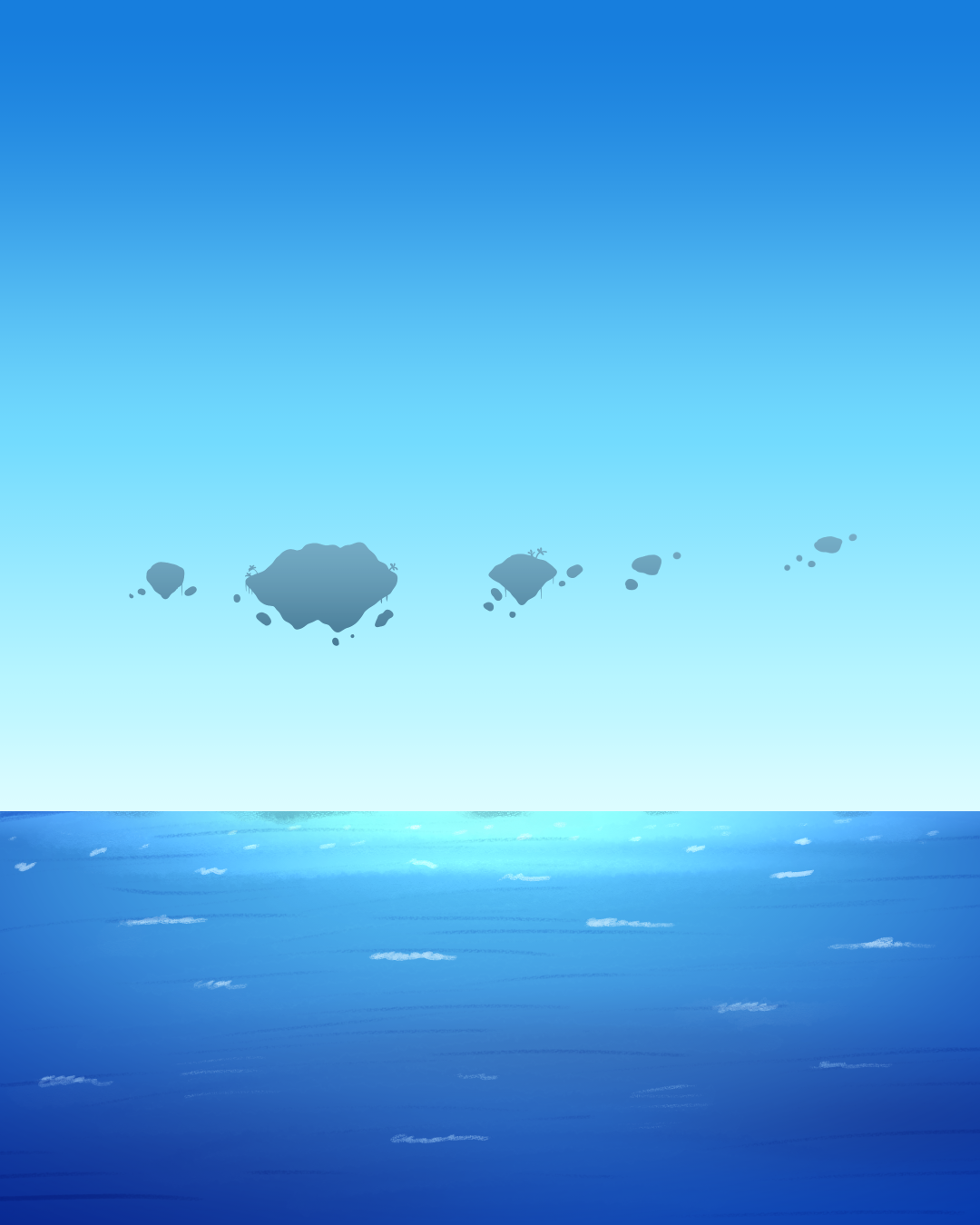
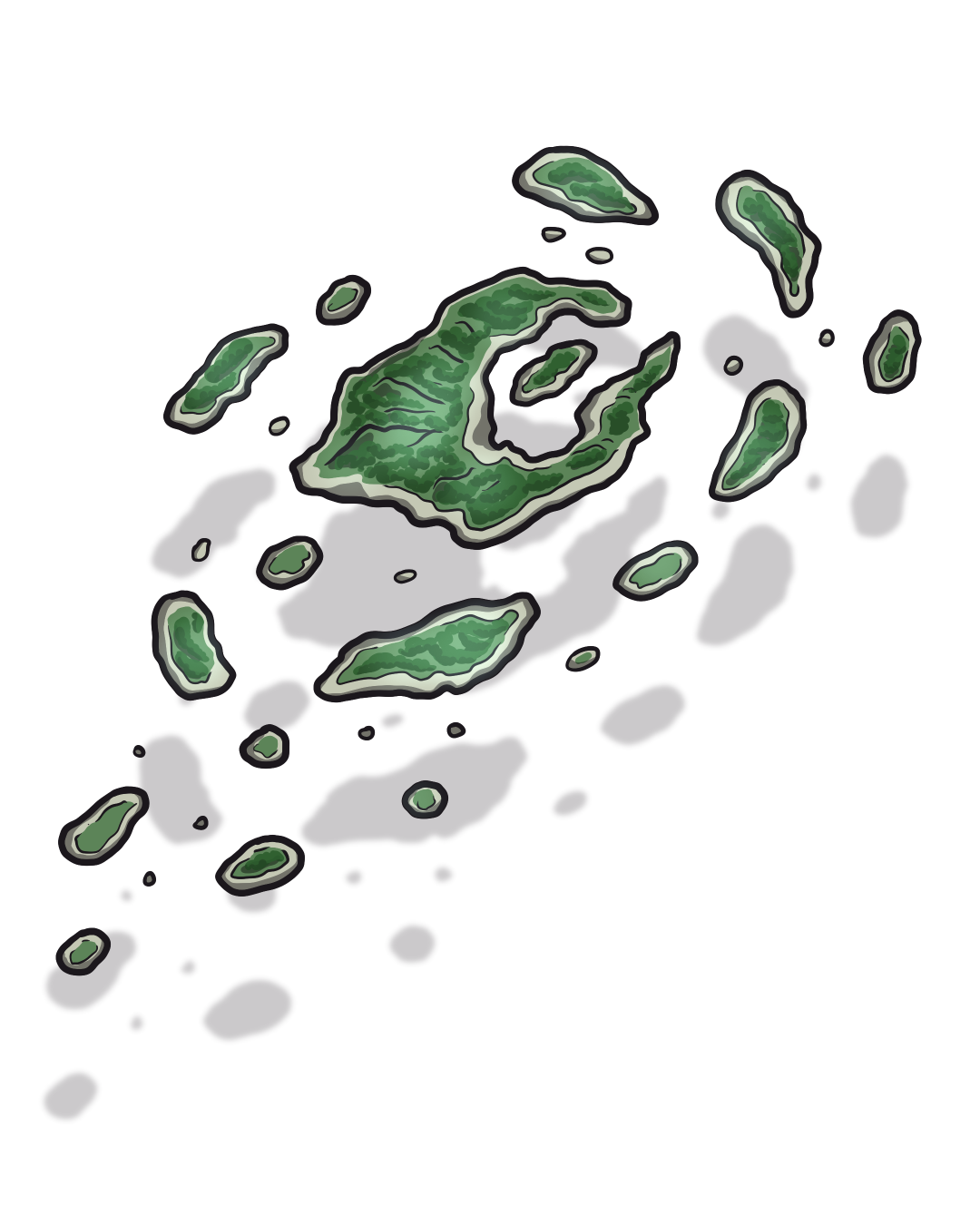

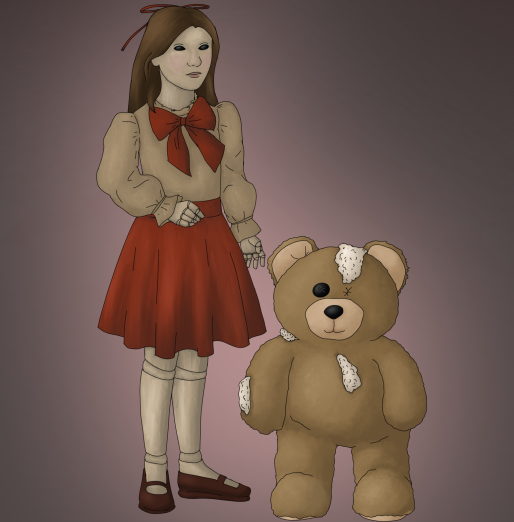
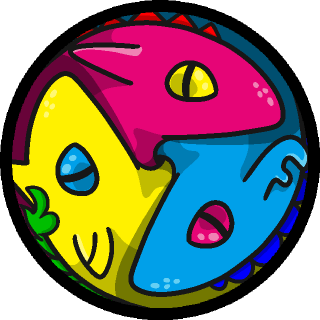

I really like how the islands work off the Celestial Laws. Their life cycles and how each changes over the time are also interesting. A flying island earthquakes is something I've never even considered before. Lovely!
Thank you!! <3